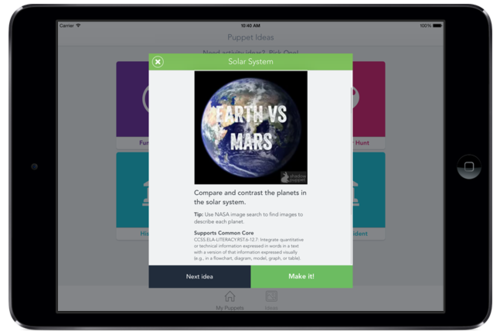

We start with a concept that is related to our first topic, but is a review skill. Usually I introduce math workshop (which includes video lessons) during the first week of school, often on day 2or 3. Just like we set clear expectations for other parts of our school day, we need to set clear expectations for video lessons. I get asked all the time about implementing video lessons and my biggest piece of advice is to be intentional about how you start the year. I started using video lessons as part of an in-class flip for my math workshop back in 2013. Some will be teaching entirely online, while others will be using video lessons in combination with in-person teaching. This school year many teachers will find themselves using video lessons for the first time. Have you used Edpuzzle with your kids? What do you love? What do you wish was different? What questions do you have? Leave a comment and let me know. On the free version you're able to insert multiple choice questions or short answer.Įdpuzzle has some great tutorial videos to help you get started. This is a great way to ensure your kids are paying attention to the video or to also grade students on the video content. The video will pause and force students to answer a question before moving on. Youtube videos are blocked for my students so even if I put the YouTube video in Edpuzzle, my kids won't be able to watch the video on their school-issued device.Įdpuzzle allows you to insert questions throughout the video. However, be sure you're aware of your school's policy on sharing online videos. You can upload your own videos or use videos you find online. However, if I uploaded the same video to Edpuzzle they were able to watch it without any problems. Last spring when I was assigning video lessons, my students had a lot of trouble with videos loading when I shared a video via Google Drive or straight in Google Classroom. There are few things I like about Edpuzzle - especially with remote learning: It's a great way to hold students accountable for watching videos and works nicely with Google Classroom.

Edpuzzle is a website that allows you to embed questions into videos and assign them as lessons to your students. If you're just getting started with flipped lessons an easy tech tool to use is Edpuzzle. Leave a comment and let me know: will you be conducting live lessons with your virtual learners? Over the next week I'll be sharing tips for running successful math meetings - and they'll all be virtual learning friendly! During these meetings students are active participants and it's a way to practice the current skill in a more play-based/discussion based format. These meetings are a time for our class to come together and work challenge problems, play math games, work through engaging real-world problems, do number talks, or practice an activity they'll do on their own later. I plan to treat the live lessons the same way I treated my whole group time in person - as a class math meeting. So the question remains, if I don't use my live lessons for teaching new content - what will it look like? And it's not so easy to see that they're taking notes, or paying attention, or for them to feel comfortable asking questions. I can only imagine the added difficulty of this when I'm teaching to a computer screen and my students are staring at a screen that also has the faces of all their classmates staring back at them, along with whatever distractions are in their home. That I answer questions, but also keep the lesson moving along.

Trying to teach while ensuring that they are taking notes, that I'm not going too fast for slow students or too slow for fast students. One of my favorite things about using a flipped model is that gone are the days of me standing at the front of the room while my students take notes.

My biggest concern was the very reason why I switched to instructional videos in the first place - how would I keep students engaged while I lectured? And do I need to completely shift away from a workshop model or is there a way to keep things similar even with virtual learning? So I had to stop and think - would there still be a way to do a flipped model in this style? Or would the live lesson replace my instructional videos? This lesson is also recorded for students who can't make the live time. I just use that time differently now.Īs my school moves to virtual instruction to start the year (and with some students choosing this method for the foreseeable future), our district has designed a day where students tune in for a live lesson at the beginning of an instructional block. However, it does not mean that I don't meet with my class whole group at the beginning of our math workshop time. That means that my whole group instruction has been replaced with short instructional videos. (Want to know more? Check out this post). I've been using a flipped model in my math class since 2013.


 0 kommentar(er)
0 kommentar(er)
